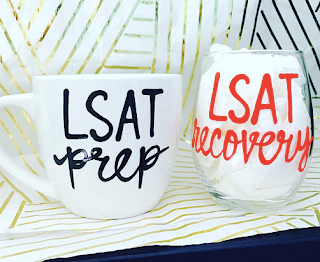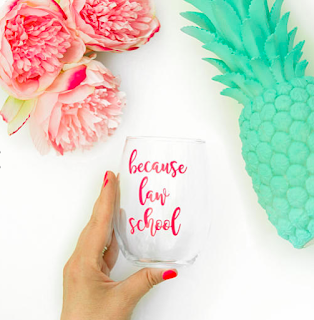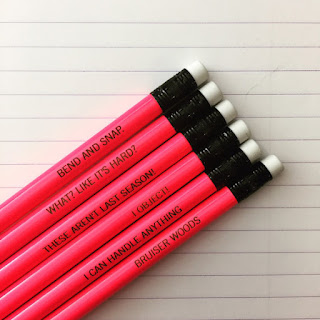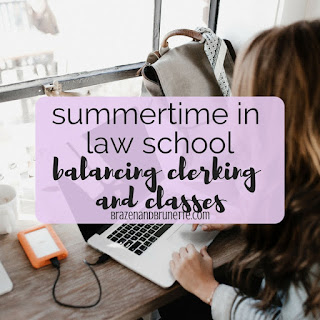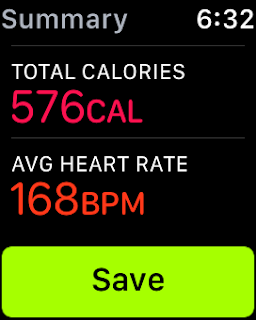What is an externship
Ok so according to my school's website, only 14 law schools do an "externship" like what I'm doing, so your school's externship may be a completely different experience than what mine will be. An internship and an externship both are where you're working in a law-related job. I've seen some job postings for summer internships that offer course credit because just so you know, the ABA has this [dumb] rule that you can't get paid for any work that you're doing for course credit.
So for my externship, I'll be moving to Dallas and not taking any classes and instead working 490 hours for 12 hours of credit. I'm really pumped about this situation! This program is pass/fail so basically after my Fall finals, I will be done with finals foreverrrr. And I feel like this will be a great transition into the real world because I'll basically be doing a real job and then taking the bar and then hopefully going straight into my first big girl job. But obviously the biggest seller is that I'm getting a crazy amount of experience! Between my summer internships and my clinic and my externship, it's really helping me not stress out so much about trying to make myself sound good on my resumé and in interviews.
Dallas Magazine wrote a great article about this program if you want to read more about it here (heads up— if you're going to Tech or SMU I highly recommend you read this).
Application
Once again, my school required that we go to an information session at the beginning of the spring semester that they only mentioned through our school daily email so I'm glad that I'm always good about reading that. This was how we got our name on the list to be emailed the application packet. Because this is a much bigger program than the clinics, the application process definitely took a lot more time so heads up about that.
First off, they gave us this huge packet that had all of the different placement options. What I did was look at the cities that were offered and narrowed it down to my top three cities. Then after that, I went through and picked all of the placements from those cities that were in the field of law that I'm interested in. I took this information and made a little spreadsheet that included: company name, type of law, GPA requirement, experience requirement, and the position description. Then I narrowed this down to my top 5 (my school only let us apply to 5 placements) based on which I thought were the best fit for me/had my best chances of getting in.
My application itself was 9 pages! The questions were your basic ones of what's your GPA, what you're involved in, all of the "have you ever..." questions like when you applied to law school. Then I ranked my top 5 choices in order which tbh I didn't really have a method for putting them in the order that I did and just kinda went with what I felt like at the time.The next part asked for an explanation of my top 5. Since almost all of my choices were very similar, this was one of the hardest parts to have a good explanation without repeating myself. I'm glad that I took the time to personalize my reasoning, though, because I later found out that my placement received a full copy of my application so they saw what I put for them and everyone else. The last part was a conflict of interest form so I just listed what I'd worked on my past summer. If you have a job right now, it'd be a really good idea to keep a list of who you work with and what you work on because you will end up having to give that to pretty much any employer in your future.
Interview #1
About two weeks after I turned in my application, I received an email that I'd made it to the next round, which is campus interviews. This interview was about 10-15 minutes long. This was an interview at my school put on by the program director, the career services director, and a few other people who help them match you with your program. I wore my suit and showed up just like that but last minute my friend told me to take my padfolio in case I ended up wanting to take any notes during the interview. I'm glad I showed up with this (I stuffed my keys in one of the pockets so I didn't bring my purse) because literally every other interviewee that was there had the exact same thing!
The best part about showing up 30 minutes early (I was nervous) was that I got to talk to the other interviewees while we waited. This really calmed my nerves and they didn't feel like competition at all because most of them wanted to do criminal and I wanted to do civil. One girl was even nice enough to stay after her interview and give us a heads up about the types of questions she was asked. I was immensely grateful for this because I wasn't sure how to prepare for this interview at all. I didn't know if it'd be like a normal job interview where I'd be expected to have done a lot of research about the companies (I had, but was nervous that I'd get 5 companies mixed up in my head due to interview nerves).
The main question they asked me was to talk about my top 5 choices, so I was glad I had the foresight to at least study my explanations from my application. They also asked me where I planned to study for the bar after graduation (apparently they like for you to study for the bar in the city you went to school at). The hardest part for me was when they asked me my plans for the classes that I hadn't taken yet.
Because I was a transfer, I only had taken 2 required classes at that point, was currently enrolled in 3 required classes, which left 4 required classes and 18 hours to complete before I left for this program so I could graduate on time. After talking to some students, I heard that some of these classes were offered in the summer so I told them that was the plan for those and I'd take the rest in the fall. Things got a lil awk when one of the interviewers was like oh yeah neither of those classes are being offered in the summer... So my advice to you would be to take the extra step and talk to the registrar and get a solid plan on what class you'll take when or else you'll be like be sitting there convincing them that you can get it all done. Honestly, this was the one thing that made me think well I'm not getting in as I walked out the door.
Interview #2
So yay happy day when I got an email that not only did I get in to the program, but I was matched with my second choice! But that wasn't the end of the application process, so in that email I was told that I would be getting an email from my placement because they get the final say in whether I'm their extern or not. Since the externship is 5 hours away from me, they set up a phone interview with me. I'm sooo glad that this wasn't a Skype interview because it took some pressure off me knowing that they couldn't see me. This interview was about 30 minutes long.
But that doesn't mean that I whiffed this interview. Oh no no no, I did major research. First I searched Lexis to see if I could impress them and be like "oh yeah in X case I liked Y theory that you argued," but I guess good for them there was only one opinion and it was granting summary judgment for them. So then I tried googling them. What was really hard was this is an in-house counsel for a corporation, not a big law firm, so when I googled them all I got was information about the corporation.
Luckily, the site had a page about all of the major execs and I found one person whose description said he was head of their legal counsel. So I looked him up on LinkedIn and damn that website sounds pointless until you need to know about someone's work history. Through creeping through him, I was able to find like 3 other people who worked in the legal department. And then I did a totally normal thing and made a spreadsheet about these people. Their names, where they went to undergrad, where they went to law school, how long they've been there, and what their position is.
This turned out to be really helpful during the interview! When my interviewer started out the interview saying that another interviewer was in a meeting but would be conference calling in afterwards, I knew exactly who she was talking about. Another thing that helped from LinkedIn is that I had seen their profile photos so I could picture who I was talking to and that helped a lot. One thing though about all this creeping is that when one of my interviewers mentioned that she went to law school in Dallas, it was really hard for me to remember not to be like oh yeah I know! haha
Anyways, this interview itself was pretty typical. They started off asking me about what I knew about the company and I started off by connecting that some of their philanthropy work that was listed on their website is a program that I was involved with in high school. Then they transitioned into talking about what their legal team is like. My favorite part was when we were just chatting about our thoughts on law school and my interviewers were even joking around with me, which really made me feel more comfortable.
At one point they asked me why I wanted to work with them and what I hoped to get out of it. I reiterated what I said in my explanation on my application and tried to echo what they had given as the job description that was in the placement packet that I had got from my school at the info session. One thing that I wish I would have done in hindsight was steal some of the job descriptions from the other places that I had included on my application because since the jobs were all so similar, it would have given me more to talk about.
The next morning after my interview, I sent a follow-up thank you email to each of my interviewers. I know this isn't as formal/professional as a hand-written thank you, but I didn't feel like I had 3 days to wait for the letter to get mailed and didn't want to chance them thinking that I was rude. Always make sure that you try to take a piece from the interview and tie it back in to your letter and end by mentioning how the interview reaffirmed why you want to work for them.
Related: How to write the perfect thank-you
Related: How to write the perfect thank-you
My externship
What felt like forever later (time goes by when you're nervous) I finally got the email that I've been officially placed! It was such a huuuuge sigh of relief because I actually didn't even find out until after we registered for classes and since my school registers for fall, summer, and spring all at once it was a little stressful being like well idk what classes to register when because idk if I'll be here for one or two semesters.
I've still got some details that I need to figure out like what I'm going to do with my current apartment and where I'm going to stay for that semester, but I'm glad to at least have a solid plan scheduled. Probably the best part so far is that my mom is super proud of me and took me shopping for business professional clothes so that I have more than just two pairs of pants to wear for a semester.
Related: Building a lawyer wardrobe
Related: Building a lawyer wardrobe
So what I'll be doing. I will be working at a company's in-house counsel. I'm really excited about this because their staff is much smaller than a law firm's (like 5 people) so there's a really good opportunity for me to get some get mentorship and hands-on experience. In case you didn't know, in-house counsel handles more day-to-day things since we're a company's own legal team instead of like being on a retainer so generally we won't be dealing with too many lawsuits. Instead, it's a bunch of real-estate contracts, employment contracts, trademark issues, human resources issues, and all that.
Related: What it's like to be in-house counsel
Related: What it's like to be in-house counsel
Sorry this post was long but I felt like I had no clue what I was doing since I didn't really know anyone who had been a part of this and bless my classmate for going through this with me so that I felt totally normal that I didn't get the job officially like the next day haha. If you're a 1L or 2L, I hope you'll consider looking into an externship or whatever your school has. If you're a 0L, it wouldn't be a terrible idea to be looking at the schools you're applying to and seeing what kind of opportunities like this they have for you. Also, I know it's way off in the distance, but let this post serve as a warning that I might get too busy to blog this spring so sorry if that happens.








